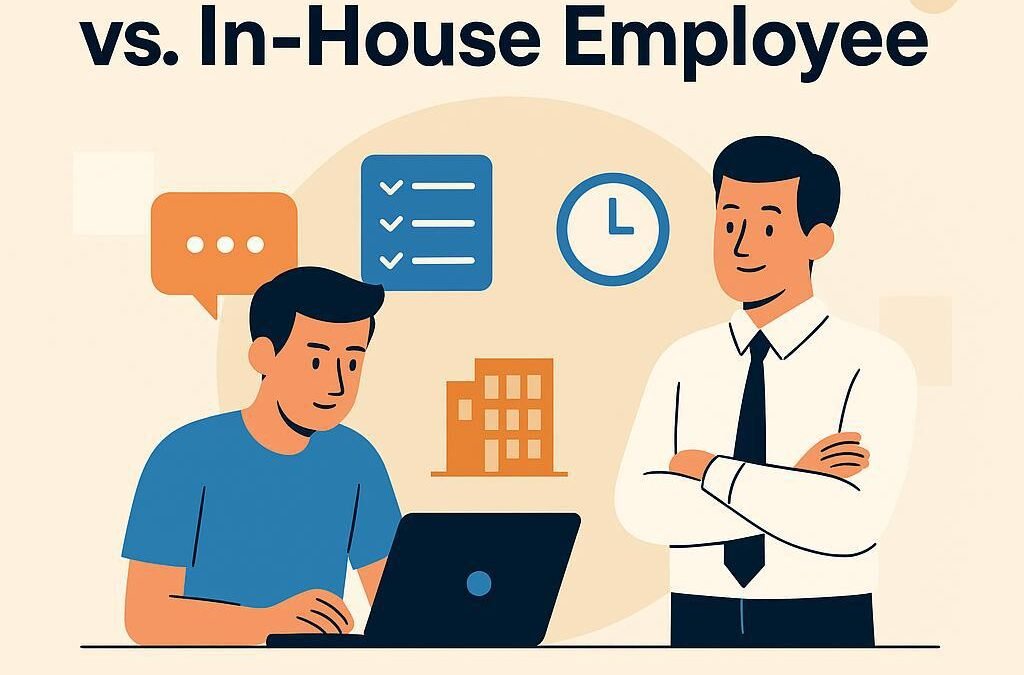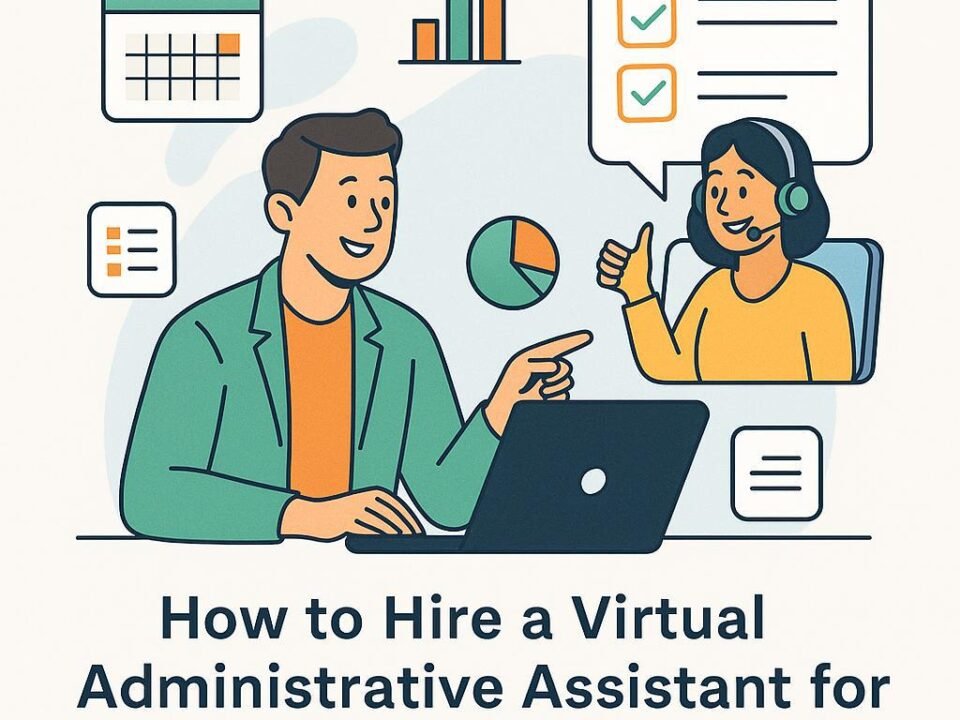- Have Questions? Talk to Us
- info@procizo.com

Virtual Assistant Services for Entrepreneurs Who Want to Work Smarter
July 25, 2025
How I Hired a Virtual Administrative Assistant Who Helped My Business Grow
July 31, 2025Hire a Virtual Assistant
If you’re anything like most small business owners, you’ve probably asked yourself this question at least once: “Should I just hire someone full-time… or would a virtual assistant be enough for now?”
I’ve wrestled with that question myself. In fact, it came up right after I realized I was spending more time answering emails and chasing invoices than actually growing my business. So I did what most of us do—I looked into my options.
Here’s what I figured out, the honest version—not just what sounds good on paper.
First Off: What’s the Difference, Really?
With an in-house employee, you’re bringing someone into your team on a regular schedule. They’re on payroll, using your tools, and expected to be part of the day-to-day.
A virtual assistant (VA), on the other hand, usually works remotely and supports multiple clients. You might hire them for a few hours a week or for specific tasks, and you don’t need to manage benefits, taxes, or office space.
Simple enough—but the details matter.
Let’s Talk Numbers
Hiring someone in-house means a salary, plus all the extras: taxes, software, equipment, maybe even health benefits if you go that route. For many small businesses, that’s a big leap.
With a VA, you pay for exactly what you need. No overhead, no commitment beyond your contract. If you’re just getting out of solo mode, this can be a much safer starting point.
Flexibility: Huge Advantage
The reality is, some weeks are chaotic and others are oddly slow. Having someone on salary when things are quiet can feel like money slipping away.
A VA lets you scale up or down depending on your workload. I’ve gone from 15 hours one month to 5 the next—without skipping a beat.
Training & Experience
One thing I really appreciated with virtual assistants: many of them already know how to do the stuff you don’t want to spend time teaching.
Need someone to organize your calendar? Reply to customer inquiries? Post on social media? They’ve likely done it before—and probably better than you.
What About Accountability?
This is where in-house can feel easier. You can check in face-to-face, brainstorm on the spot, and see how things are going.
With a VA, it takes a bit more upfront effort. You’ll want to put systems in place (a simple to-do list app or project tracker goes a long way). But once you’re both in rhythm, it becomes surprisingly smooth.
Do They Feel Like Part of the Team?
This was something I wondered about at first. An in-house person is immersed in your culture—they’re at team lunches, they hear your rants, they celebrate wins.
Can a VA feel that connected? Actually, yes—if you treat them as a partner. Weekly check-ins, a bit of transparency, and some trust make a big difference. My VA now knows my priorities better than some former employees did.
So, What’s the Right Call?
Here’s the conclusion I came to:
- If you’re in growth mode but still figuring out your systems, start with a virtual assistant.
- If you’ve got a steady flow of work and need someone embedded in your daily workflow, in-house might be the better route.
And honestly, you’re not locked into either. I started with a VA, built up some core processes, then added one in-house person later. That mix worked better than I expected.
Final Thought
Don’t rush the decision, but don’t overthink it either. Start small. Test what works. You can always expand later.
What matters most is that you’re not stuck trying to do it all yourself. Because that’s the quickest way to burn out—and the slowest way to grow.




